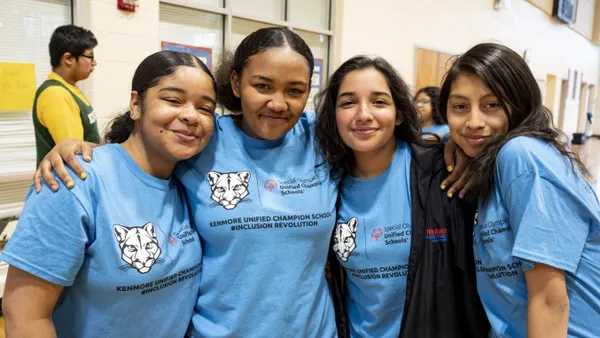Dive Brief:
- The Los Angeles Unified School District (LAUSD) announced this week it will begin producing reports that include the number of students in foster care in the system, as well as how often they change schools and how they are doing academically, socially and emotionally. The district, the nation's second largest, serves the most children and youth in foster care in California — more than 3,500, according to the district.
- “We have an obligation to take a comprehensive look at all factors contributing to the current and future success of our students in care: school stability, academic data and social emotional indicators,” LAUSD Board Member Kelly Gonez, the author of the resolution, said in a statement.
- The resolution also directs Superintendent Austin Beutner to create official partnerships with higher education institutions to help foster youth make the transition into postsecondary education and to work with Los Angeles County to provide mental health services for these students at school.
Dive Insight:
The Every Student Succeeds Act requires states to now report achievement data and graduation rates for students in foster care. But LAUSD’s efforts to report a broader set of indicators go well beyond what most districts do, according to Michelle Francois, senior director for compassionate systems with the nonprofit National Center for Youth Law. The center's FosterEd initiative helps school districts improve services for students in the child welfare system.
The resolution "is significant in acknowledging this data is vital in serving kids involved with the child welfare system," Kawena Cole, FosterEd's program manager for the Antelope Valley, part of Los Angeles County, said in an email. "I hope that this will lead to understanding the complex challenges relevant to LAUSD and helps the district see where target supports are needed and how those challenges and supports need to be changed from year to year."
But even with improved attention to the complex issues facing students in the child welfare system, districts often don’t have the resources or systems in place to provide additional support, such as transportation to a school of origin or extra tutoring to overcome learning loss as a result of changing schools.
A recent report from Massachusetts State Auditor Suzanne Bump notes that “communication and cooperation roadblocks between child welfare and local education staff,” as well as confusion about federal requirements, also put a strain on the current efforts to provide educational services for children in foster care. Her report includes multiple recommendations, such as staff training for both education and child welfare staff members on making placement decisions for students, “electronic backpacks” to make sure schools promptly receive records on incoming students, and transportation experts to help districts reduce those related costs.








 Dive Awards
Dive Awards







